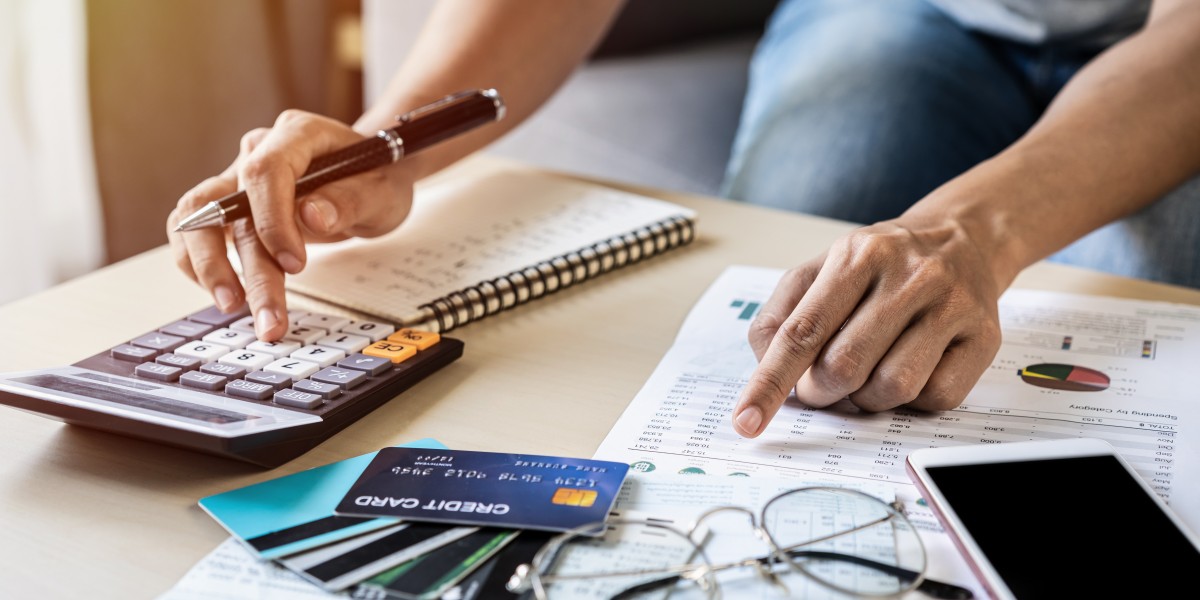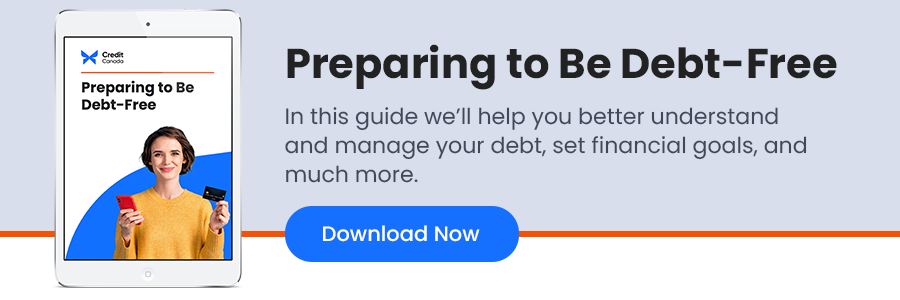
Debt is a major issue for many people living in the Great White North. It can accrue for a great many reasons, such as illness or injury limiting one’s ability to work for a while, having to take on major loans to pay for a house or education, or simply bad luck when global events cause a specific industry to suffer—leading to job loss.
Excessive debt has driven many people to seek debt counselling services to find some form of relief from endless collection calls and denial of financial services. According to the Government of Canada, the “average household debt now represents 177% of Canadians’ disposable income, up from 168% in 2018.”
However, not all debt is the same. There are a few different types of debt that you might accrue. And, the kind of debt you hold may affect your options when you seek debt help. Today, let’s discuss the different types of debt, what they are, and what you can do about them.
The Different Types of Debt
There are four major kinds of debt that a person can accrue. Each of these forms of debt can be further subdivided into more specific debt classes. Here’s a broad, high-level view of each type of debt:
1. Secured Debt
Secured debt is the term for any kind of debt that is backed by collateral—if the debt isn’t paid, then the asset (or assets) used as collateral are forfeited. There are many kinds of assets that can be used as collateral—motor vehicles, homes, bonds, stocks, etc.
One of the most common examples of secured debt would be auto loans (where the vehicle is the collateral). Auto loans are one of the types of long-term debt that people frequently take on, as vehicles can be high-cost assets that take a while to pay off.
2. Unsecured Debt
Unsecured debt is what lenders call debt that doesn’t have to be backed by collateral. Here, credit checks of the borrower are the biggest determining factor in deciding whether the loan will be approved (and how much the loan is for). The reason for this is that, since there’s no collateral set aside to cover the value of the loan, the lender needs to verify that the borrower is trustworthy and reliable enough to pay them back.
An example of a kind of debt that would be considered “unsecured” would be student loan debt. Here, the loan is covering an education—not exactly something that can be reclaimed if you cannot pay your loans. One interesting thing about student loans is that there are factors that may affect your ability to get a loan and the loan amount aside from your current credit. For instance, the future earning potential of your degree.
3. Revolving Debt
This is the term for a line of credit where a borrower can use funds up to a predefined borrowing limit and pay it back from month to month. The most common example of revolving debt is credit card debt.
Revolving debt can be either secured or unsecured. In the case of a secured credit card, the “borrowing” limit is determined by the amount the user deposited. For an unsecured credit card, the borrowing limit and interest rate are typically determined based on the borrower’s credit score and history.
4. Mortgage Debt
Mortgages are a specific type of secured debt where the collateral is the property being mortgaged. Why is this being mentioned separately from secured debt if it’s the same type of debt? Because there are many details that vary from mortgage to mortgage to make them worthy of their own debt classification.
For example, there are fixed and variable rate mortgages, hybrid mortgages, mortgages that refinance other forms of debt into the mortgage, and more. Mortgages are one of the most common types of long-term debt that people will have, as it can take years or decades to pay off.
Good Debt Vs. Bad Debt
Aside from the different types of debt (secured, unsecured, revolving, and mortgage), debt can also be classified as being “good” or “bad.” What’s the difference between good vs. bad debt?
Generally speaking, “good” debt is debt that you take on to increase the value of an asset. Some examples of good debt include:
- Mortgage Debt. This is considered good debt because, at the end of the mortgage, you’ll have a high-value asset that you could use as a home, business asset, or a piece of collateral for future transactions.
- Student Loans. Unlike mortgages, the asset that’s being enhanced with student loan debt is, well, you. A higher education helps you learn new skills or improve your career options—making you a more valuable asset and impacting your potential future earnings.
What are some examples of “bad” debt, then? A couple of examples include:
- Auto Loan Debt. You might think that auto loans would be an example of “good” debt since you’d be the owner of a new asset once the loan is paid off. However, unlike homes, automobiles rarely increase in value after the loan ends. In the vast majority of cases, an automobile will significantly decrease in value—even if you maintain it in near-perfect condition.
- Credit Card Debt. Credit card debt is a bad form of debt because it is often for items that depreciate in value over time (much like auto loan debt). Plus, the high interest on many credit cards makes it so that the value of the asset—even if it doesn’t drop over time—will not be equal to the money spent to acquire it.
Other short-term types of debt, like payday loans, can be even worse than regular credit card or auto loan debt. Worse yet, they can lead to a potentially never-ending cycle of debt as you end up borrowing more money just to cover the high interest rates on previous payday loans.
What to Do about Different Types of Debt
Regardless of the specific type of debt that you may have, it’s important to have a plan to deal with that debt. There are quite a few ways to get out of debt in Canada, but not every solution is the right fit for your specific situation.
Here are some things you can do about the different types of debt:
- Get a Debt Consolidation Loan. Instead of continuing to carry a half-dozen different forms of debt, some borrowers might wish to seek a debt consolidation loan (or even to consolidate that debt into their mortgage). This helps to simplify debt repayment since you only have to pay one loan instead of several different ones—and it’s often possible to reduce your overall interest rate so repayment becomes easier.
- Sign Up for a Debt Consolidation Program. A personal debt consolidation program (DCP) is different from a consolidation loan in that you aren’t actually refinancing your debt. Instead, a non-profit credit counselling agency works with creditors to negotiate a drop in your interest or even eliminate it entirely. Then, you make your monthly payments to the counselling agency, who distributes them to your creditors on your behalf.
- Pursue an Insolvency Option. Working with a Licensed Insolvency Trustee (LIT) on a consumer proposal or a bankruptcy declaration may be the best choice if you are truly backed into a corner with little to no hope of ever being able to pay off your debt otherwise. However, this should be saved as a last resort since it can have a severe effect on your credit score and even cost you some of your assets.
- Apply Budgeting Best Practices. Instead of seeking help, you might prefer to pay back the types of debt that you’ve accrued on your own. Here, creating a monthly budget and living well within your means is an important first step. It can also help to choose between the “avalanche” and “snowball” methods of paying off debt—this means either paying off the biggest debts with the highest interest rates first (avalanche) or the smallest debts that are the easiest to clear first (snowball).
Need help with debt management in Canada? Credit Canada is here to help! We’re a non-profit credit counselling agency that has helped thousands of people get out of debt—and we want to help you, too!
Whether you need a debt consultant to provide some basic advice or want to sign up for a debt consolidation program, we are here to provide convenient, supportive, and judgment-free services. If you need help, reach out to us today or call 1.800.267.2272 to get started.
Frequently Asked Questions
Have a question? We are here to help.
What is a Debt Consolidation Program?
A Debt Consolidation Program (DCP) is an arrangement made between your creditors and a non-profit credit counselling agency. Working with a reputable, non-profit credit counselling agency means a certified Credit Counsellor will negotiate with your creditors on your behalf to drop the interest on your unsecured debts, while also rounding up all your unsecured debts into a single, lower monthly payment. In Canada’s provinces, such as Ontario, these debt payment programs lead to faster debt relief!
Can I enter a Debt Consolidation Program with bad credit?
Yes, you can sign up for a DCP even if you have bad credit. Your credit score will not impact your ability to get debt help through a DCP. Bad credit can, however, impact your ability to get a debt consolidation loan.
Do I have to give up my credit cards in a Debt Consolidation Program?
Will Debt Consolidation hurt my credit score?
Most people entering a DCP already have a low credit score. While a DCP could lower your credit score at first, in the long run, if you keep up with the program and make your monthly payments on time as agreed, your credit score will eventually improve.
Can you get out of a Debt Consolidation Program?
Anyone who signs up for a DCP must sign an agreement; however, it's completely voluntary and any time a client wants to leave the Program they can. Once a client has left the Program, they will have to deal with their creditors and collectors directly, and if their Counsellor negotiated interest relief and lower monthly payments, in most cases, these would no longer be an option for the client.








